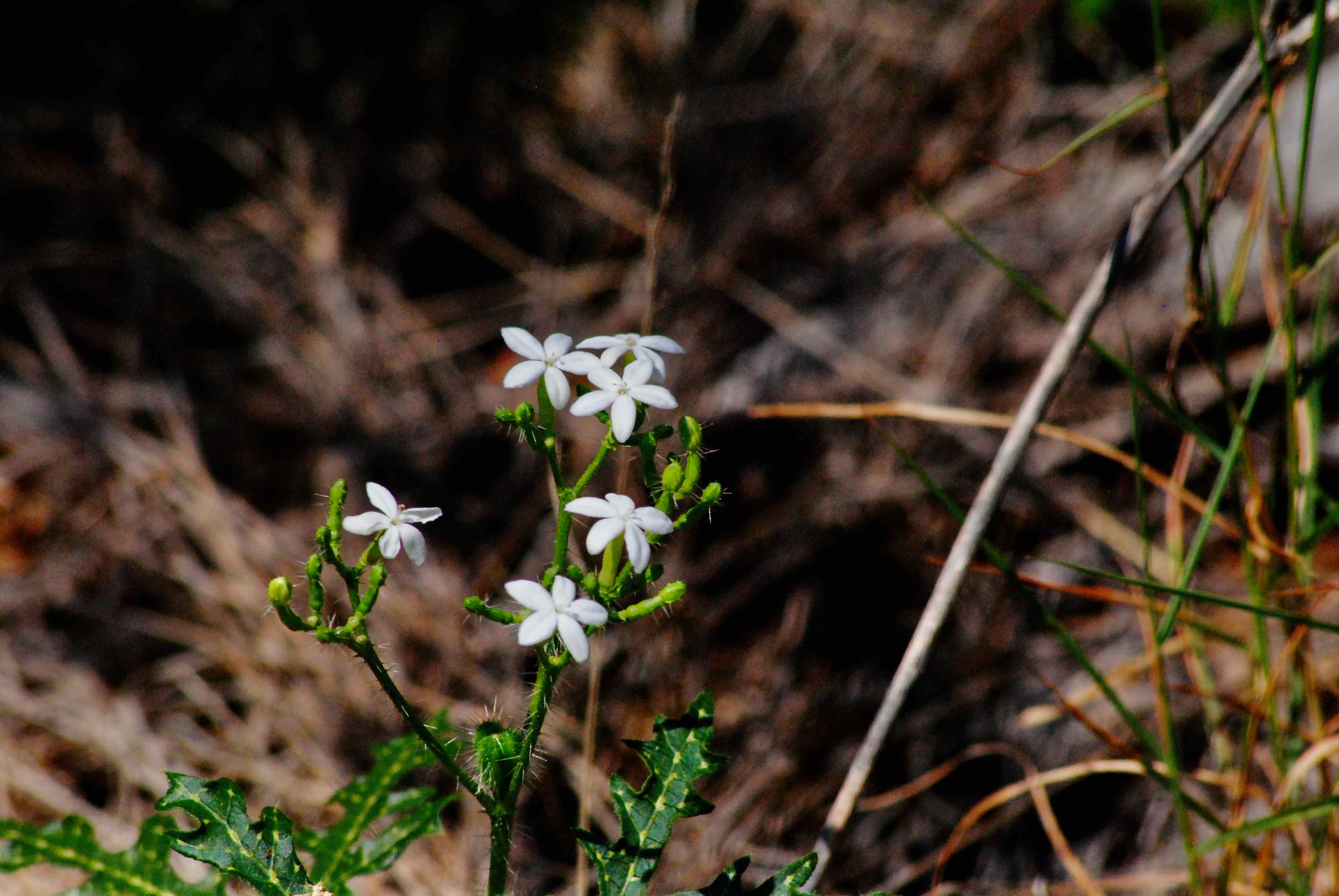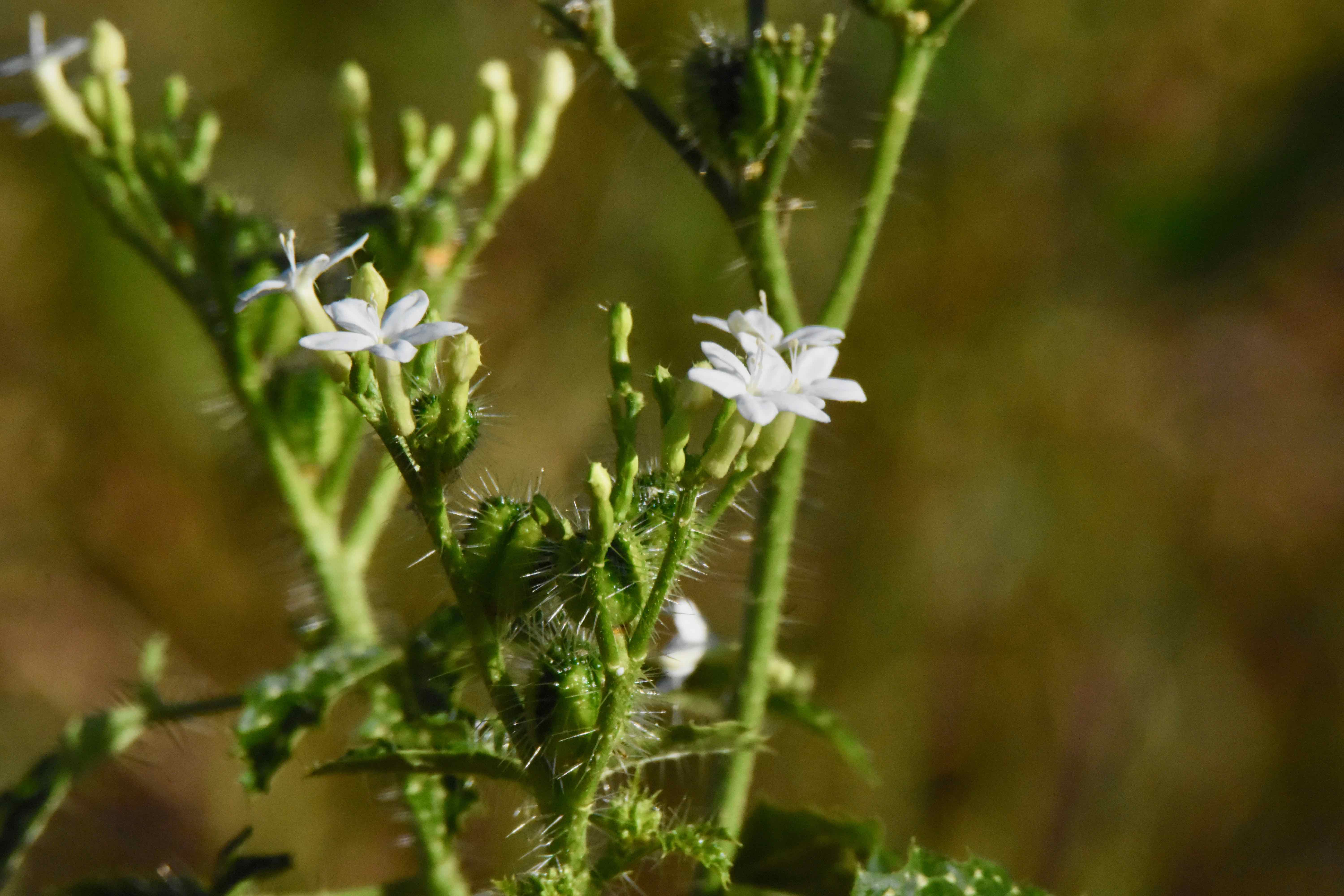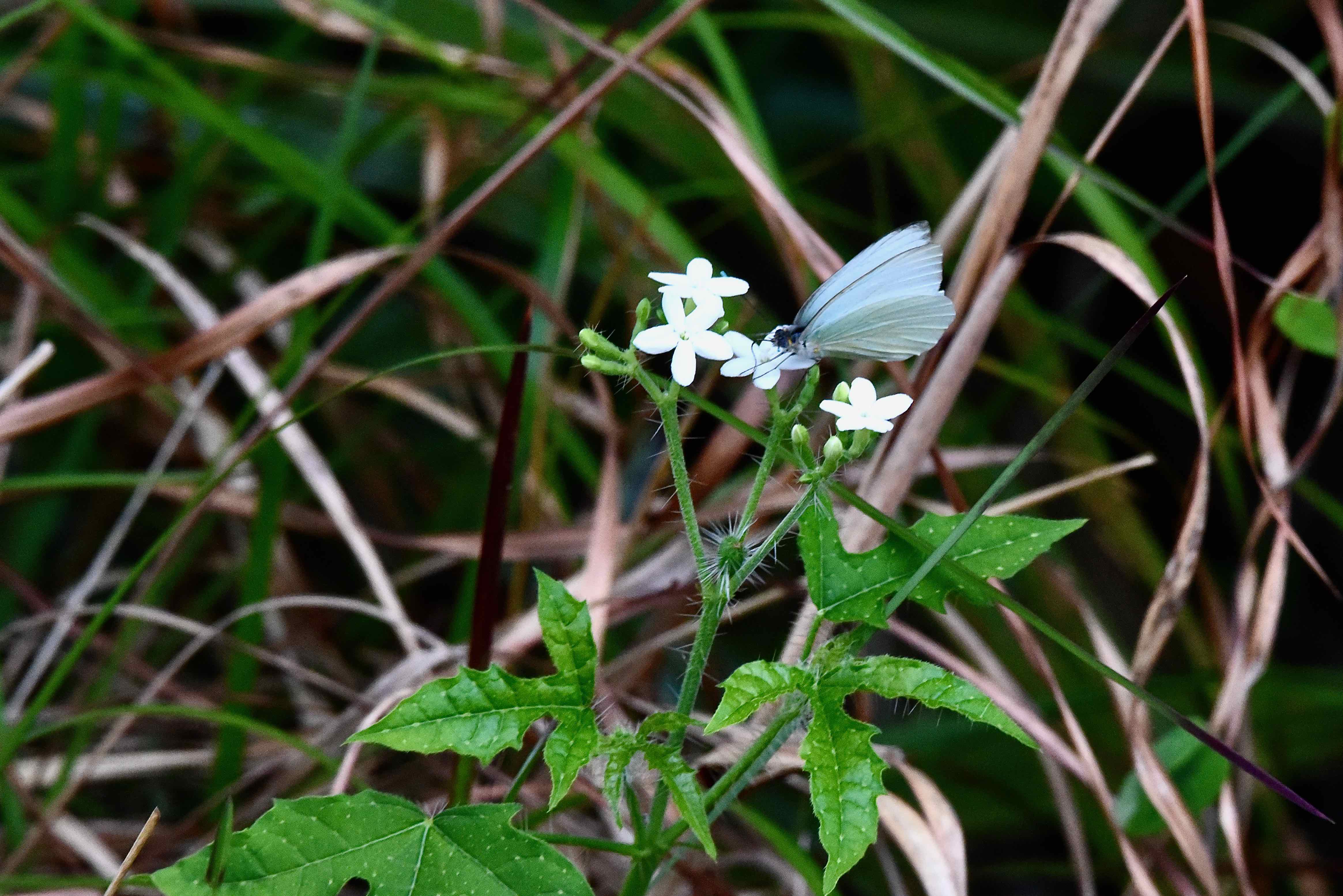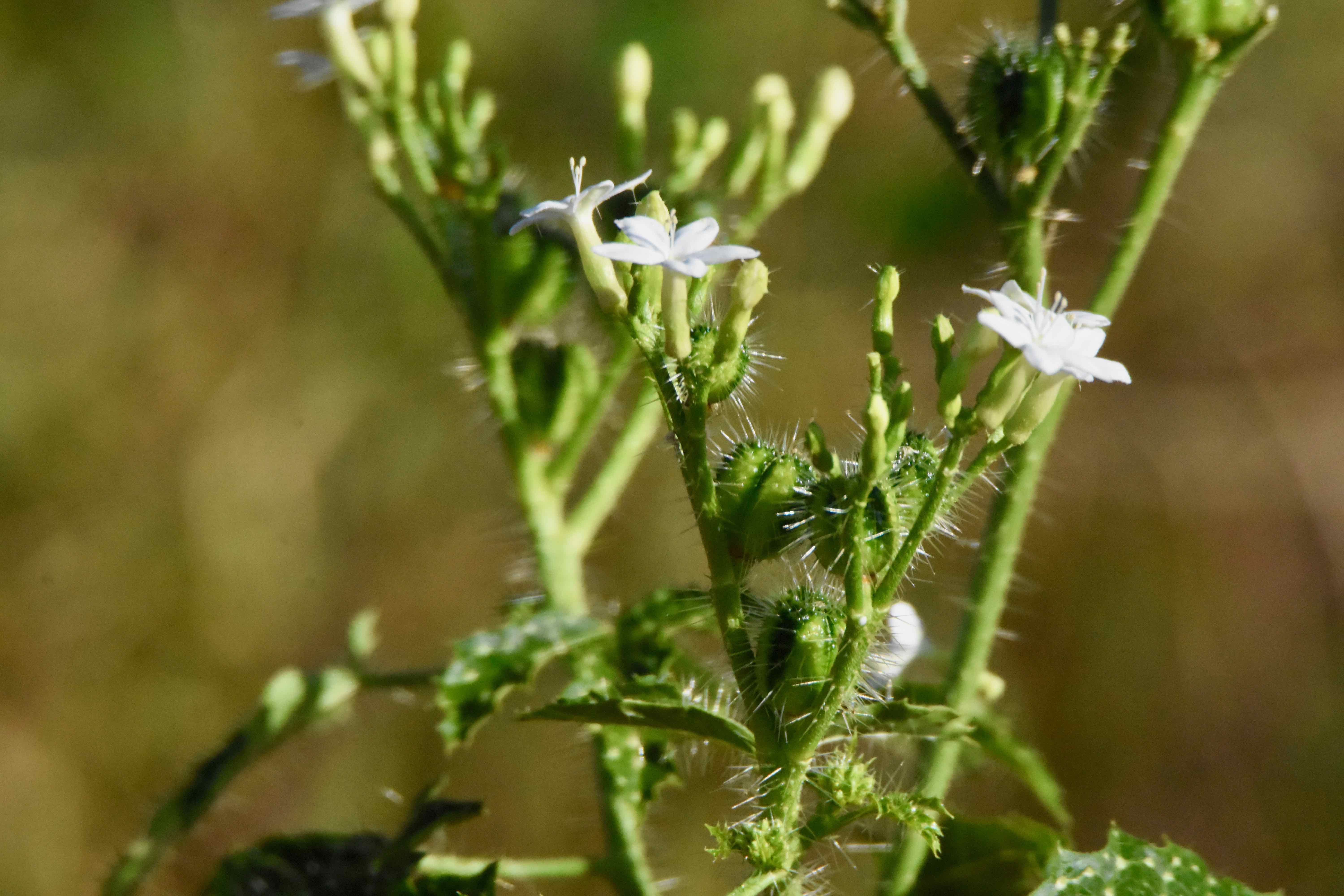
Tread softly, photographed at Paw Paw Natural Area, Palm Beach Gardens, Palm Beach County, in April 2018.
Tread softly, Cnidoscolus stimulosus, produces a pretty white flower but you don't want to pick it. You don't want to touch it. In fact, if given the choice between jumping into a patch of tread softly or a patch of poison ivy, you might want to seriously consider the poison ivy.
Tread softly is that nasty. It's no mistake that one of this plant's other names is finger-rot. Yes, finger-rot. Touch those little hairs that line nearly every bit of the plant and you'll get a nasty, burning rash that will last about an hour. Consider them as tiny glass vials, full of acid.
It is a Florida native, found throughout most of the Sunshine State. It's a widespread plant that grows as far north as Virginia and as far west as Oklahoma and Texas. It tends to grow in dry, sandy places, like scrubs and pinelands, as well as roadsides and other disturbed areas.
The plant can grow as tall as three feet but has a soft, herbaceous stem. The leaves are simple, deeply lobed and arranged alternately on the stem. To our eyes, It vaguely resembles an oak leaf. The edges, or margins, of the leaves have a few irregular blunt teeth. The leaves also have white veins and spots that help distinguish it. And yes, they have the same nasty hairs as the stalks. The only part of the plant that doesn't have them is the flower. It is a perennial plant that blooms all year in South Florida, peaking in the summer. Farther north, it flowers spring through fall. The flowers are bright white, trumpet-shaped, less than an inch acrosss and produce pods each with three seeds that small birds eat. And yes, the pods are covered with the stinging hairs, which seem to do little to our feathered friends.
One oddity is that tread softly is edible. The root, that is, not the greens. Tastes like potatoes when cooked, but the problem is digging it up — it can be as deep as four feet, — without coming into contact with those hairs. And the root should be boiled several times, each time changing the water, to remove the toxins.
According to the University of Florida, the mechanism behind the sting hasn't been much studied. It's believed the hairs have blunt ends that break off when the plant is touched, allowing the poison to be injected into the skin.
The only remedy we've seen is to rub the irritated skin with plantain (as in a member of the plantago species, not the banana-like fruit). The good news is the discomfort will go away in an hour or less, but it will leave a red rash, which on some people might last several days.
Tread softly is an understory plant but likes sun. It is grown for landscaping, mostly in restorations and natural settings but some people actually like its unusual looks and grow it in wild flower gardens. It is certainly not grown for cut flowers. Of course the problem is controlling it or working around it; once established, it's difficult to transplant or remove.
Other names include seven-minute itch (apparently underestimating the effects of those hairs), bull nettle and spurge nettle. A Spanish name for the tread softly is mala mujer, or bad woman. It is a member of Euphorbiaceae, the spurge, family, which includes poinsettia. A taxonomic footnote: Some in the botanical world, including the U.S. Department of Agriculture's PLANTS database, refer to this plant as Cnidoscolus urens. The USDA sees C stimulosus as a synomym.
Click on photo for larger image
U.S. Department of Agriculture Distribution Maps
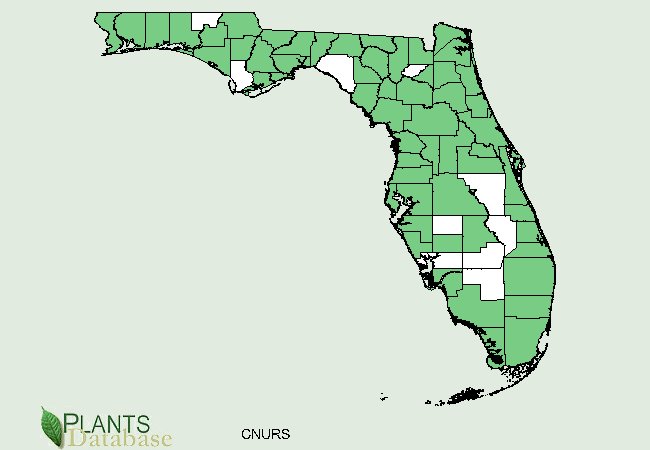

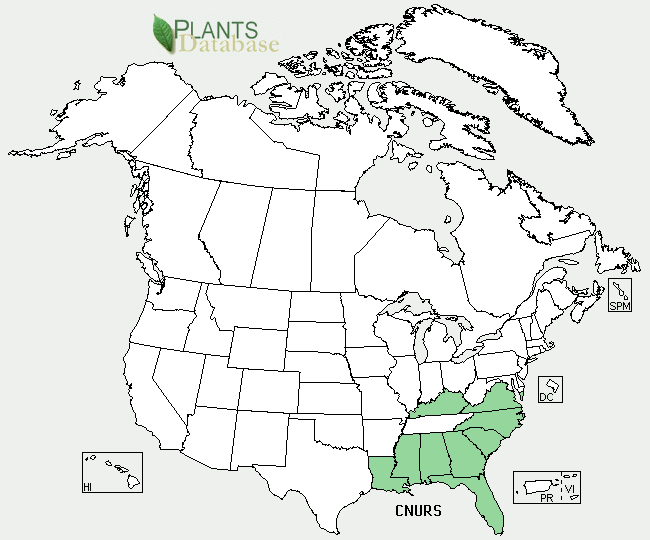
Links for read Softly / Finger Rot

